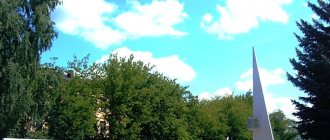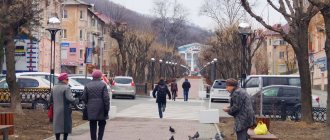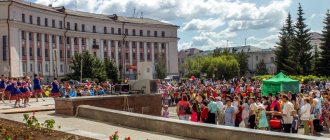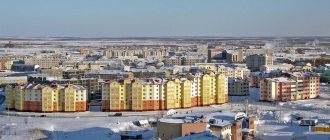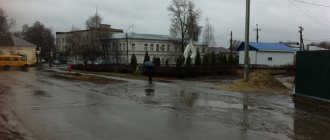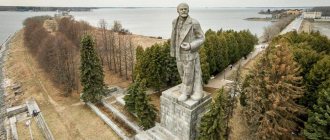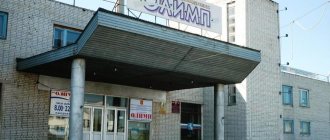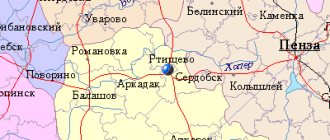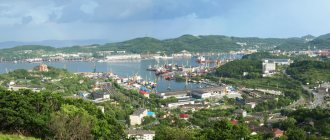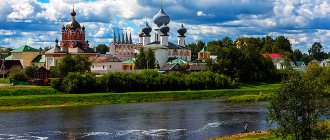The second largest city in the Kaliningrad region, Sovetsk, is known not only for its territorial characteristics. Its area is over 44 km2.
The city is famous for its history. And although Sovetsk itself appeared on the map of Russia only in 1946, the settlement was founded back in the 13th century, namely in 1288. In those years, until 1945, it was called Tilsit. This ancient city played a very important role in history - the signing of a peace treaty between Russia and France in 1807, the first schools were opened, the release from subordination of Germany in 1945, etc.
Modern Sovetsk is a large-scale transport hub and industrial center of the Kaliningrad region. Over 40,000 people have lived here since 2017.
Sovetsk on the map of Russia: geography, nature and climate
The city of Sovetsk is located near the confluence of two fairly large rivers - Neman and Tylzha . On the border with the Republic of Lithuania, 118 km from Kaliningrad. In the Kaliningrad region, this settlement has the northernmost location. Its geographical location has one amazing feature. The administrative centers of the Slavsky and Nemansky districts adjacent to Sovetsk are located at a distance of 7 km from it.
The proximity of rivers and the northern location influenced the weather and climatic conditions in the city. The maritime climate here gives way to continental and vice versa, which affects mild and warm winters, cool and pleasant summers. The hottest months with the most sunshine are August and July. In other months, the sky over the city is almost completely covered with clouds. There are no more than 35 clear days a year. Spring is also unusual here for Russia. April and March are characterized by winter-like cold weather, but already from the first days of May the heat begins. But the autumn cold will have to wait a long time. Autumn and spring come slowly in these latitudes.
Under favorable climatic conditions, high humidity prevails in the city, especially in early spring and autumn. But this circumstance also played into the hands of the city. Due to its humidity and abundance of moisture and warmth, Sovetsk is considered a garden city. Parks and flower beds are the main natural asset of the city.
Architecture[edit]
Many of the city's buildings were destroyed during World War II. However, there are still several German buildings in the center of the old town, including those built in the Art Nouveau style. The Queen Louise Bridge, now connecting the city with Panemune/Ubermemel in Lithuania, retains the arch, all that remains of the more complex pre-war bridge structure built in 1907. The carved portrait of Queen Louise above the arch still exists; however, the German inscription "KÖNIGIN LUISE-BRÜCKE" was removed after the Soviet Union captured the city.
Routes on the map of Sovetsk. Transport infrastructure
You don’t need to peer at a satellite map of Sovetsk to see that the city is cut up and down by roads and highways. The length of roads is over 100.5 km, the length of railway tracks is 17 km. There are also federal highways in the city (length over 13 km). The main transport “arteries” of Sovetsk:
- Riga-Tilsit highway - since 1836;
- Sovetsk station is the main railway junction at the address: st. Vokzalnaya 1. Provides communication with Lithuania, Neman, Kaliningrad Railway, etc.;
- The Gvardeysk-Neman highway stretches all the way to the Lithuanian border;
- Highway A216 - the motorway is part of the European road network E77;
- The Dubki-Rambinas checkpoint is being built outside of Sovetsk, designed to solve problems with transit vehicles.
Passengers are transported by buses (5 routes) and minibuses (one route). There are both intracity and intercity and international routes. Bus stations carry passengers in all directions - Kaliningrad, Vilnius, Tallinn, etc.
Famous people[edit]
Max von Schenkendorff
Frank Wisbar 1959
John Kay
- Daniel Klein (1609–1666), Lithuanian pastor and grammarian
- Johann Christian Jacobi (1719–1784), German oboist
- Max von Schenckendorff (1783–1817), German poet and writer.
- Franz Meyen (1804–1840), German botanist
- Hans Victor von Unruh (1806–1886), German politician and technician
- Wilhelm Voigt (1849–1922), inspiration for "Captain Köpenick"
- Margarete Poehlmann (1856–1923), German educator and politician, first woman to speak in the Prussian parliament.
- Gustav Kosinna or Kosina (1858–1931), archaeologist
- Johanna Wolf (1858–1943), German writer
- Max Shervinsky (1859–1909), German-born architect who worked primarily in Riga, Latvia.
- Emil Wichert (1861–1928), German geophysicist
- Raphael Friedeberg (1863–1940), German physician and politician.
- Max Gülstorff (1882–1947), German actor
- Karl Brinkmann (1885–1954), German sociologist and economist
- Franz Scheydy (1890–1942) Wehrmacht general during World War II.
- Walter Weiss (1890–1967), German general during World War II.
- Friedrich Schröder Sonnenstern (1892–1982), illustrator
- Dick Shikat (1897–1968) German professional wrestler and world heavyweight champion
- Frank Wisbahr (1899–1967) German director
- Karl Hermann Martell (1906–1966), German actor
- Franz Abromeit (1907–1964), SS officer, Reichssicherheitshauptamt ( Judenreferent
) - Joachim Sadrosinski (1907–1944), officer and resistance fighter.
- Erna Dorn (1911–1953) victim of injustice in the GDR.
- Siegfried Gratchus (1916–1943), SS Oberscharführer, killed during the uprising at the Sobibor extermination camp.
- Johannes Bobrowski (1917–1965), German writer
- Werner Abrolat (1924–1997), German actor
- Günter Wyshetzky (1925–1985), German-Canadian physicist
- Armin Müller-Stahl (born 1930), German actor, honorary citizen since 8 December 2011.[16]
- Sabine Bethmann (born 1931), German actress
- Jürgen Kurbühn (1940–2014), football player
- Klaus-Dieter Zieloff (1942–2011), football player
- John Kay (born 1944), lead singer of the late 1960s rock band Steppenwolf
- Edgar Frese (1944–2015), German founder and leader of the electronic music group Tangerine Dream
- Victor Ivriy (born 1949) Soviet, Canadian mathematician
- Andrei Sosnitsky (born 1962) Belarusian professional football coach and former player
Sights of the city of Sovetsk
Beautiful and unique nature is not all the attractions of the city. There are magnificent cultural and historical monuments, majestic architectural monuments, etc. Armed with a map of Sovetsk with houses and streets, it will be easy to find the most ancient and interesting places:
- Museum of the History of Sovetsk - opened in 1987;
- Monument to the Heart (2013), Queen Louise (1900), sculpture “Moose” (1928), monument to the Liberator Soldier (1956), Bicycle (2011), memorial sign to A. S. Pushkin , Memorial stone on the Alley of Heroes (1965) and many others;
- Villa Franca is a house built in 1888. Superbly preserved;
- Timber Merchant Villa - it is worth paying attention to the sculptures in the house;
- Ruins of Tilsit Castle - the Order Castle was built in 1289.
The House of the Poor, the building of the Queen Louise Theater and the Masonic Lodge, the Duke's School and other remarkable places are also worth seeing. And there are a lot of them in the city of Sovetsk. Some monuments of ancient architecture and history have been perfectly preserved to this day.
Sovetsk (ex Tilsit) - the city of cheese, peace and empire style
Sovetsk is associated with the number “two”. In the German past, being Tilsit, this city was immediately after Königsberg in importance in East Prussia. Including two parts located on different banks of the Neman, across which two bridges were thrown, in the 20th century it was divided between two countries. The largest part, named Soviet after World War II, is now the second largest city in the Kaliningrad region. On our journey through the Russian “Far West”, he also became second - in order of priority after the Neman.
The local administration can safely give the “goose” credit for preserving the city’s historical appearance: Sovetsk could become a tourist pearl of the Kaliningrad region, and if they try, then of all of Russia. But so far its shabby streets cause nothing but a sense of shame, especially when compared with the poor Lithuanian villages located on the opposite bank of the Neman. And although the city center, being one of the best preserved pre-war architectural ensembles in the Kaliningrad region, is officially under state protection, soon there will be nothing to protect here - Sovetsk is gradually collapsing. Even in the morning, looking at the smoldering ruins of the von Mack estate, we were amazed at how one could be so careless about the history of one’s region. But when we arrived here, we realized that there, under the Neman, there were only flowers, and the berries are here.
So, my story today is about Sovetsk, formerly Tilsit: the city of cheese, peace and empire.
In Russia there are three European cities, relatively large in the past, which miraculously survived the Second World War and the subsequent stupidity of Soviet and Russian officials, but, despite all the hardships that befell them, they still have, although tattered, but at least preserved “Western » historical buildings: Vyborg, Chernyakhovsk and Sovetsk.
Unlike the first two, probably every resident of our country knows about the latter, although they do not always realize it. The clue lies in its pre-war name - Tilsit.
The first city symbol is Tilsiter cheese, now sold in almost every supermarket. This variety was first brewed in Tilsit. This happened in the middle of the 19th century, when settlers from the Emme River valley in Switzerland founded a cheese factory on the banks of the Neman.
The second thing that Sovetsk (or rather Tilsit) is famous for is the Peace of Tilsit, concluded here in 1807, when a special raft with a covered pavilion was installed in the middle of the Neman for the meeting of two emperors - Russian Alexander I and French Napoleon Bonaparte. It is believed that it was this historical meeting that became the catalyst for the development of the Empire style, as a result of which this architectural and applied style went beyond the borders of France, becoming popular in other countries, primarily in Russia, and resulting in such world-famous symbols of St. Petersburg as the Alexander Column on Palace Square and St. Isaac's Cathedral.
Modern Sovetsk is primarily famous for the shameful antics of Kaliningrad officials, when they, standing in the mud against the backdrop of old dilapidated German buildings, proudly tell invited journalists about the construction of a gas main to several residential buildings. Today's city life can be illustrated with just one photograph, taken a couple of weeks before our arrival (source: ; author: Mikhail Avrinsky). Yes, yes, the photo shows not the post-war Tilsit of 1945. This is Sovetsk 2019, and not who knows what, but an important regional event with the participation of the governor of the Kaliningrad region Anton Alikhanov.
The history of this region began when the knights of the Teutonic Order decided to build a road to their “branch” in the Baltics - the Livonian Order, namely to Memelburg Castle, modern Klaipeda. Then, in 1313, in the area of the future Sovetsk, the first bridge across the Neman was built. Next to it, the Prussian village of Tilse (in the German manner - Tilsit) soon arose, to protect it from the Lithuanians at the beginning of the 15th century Neuhaus Castle was built.
Another hundred years later, Tilsit merchants were granted the right to market trade, and already in 1511 the first hotel appeared in the settlement. In 1552 Tilsit became a city.
Its heyday came at the end of the 19th century. Industry was actively developing in the city, and the population reached thirty thousand people. By 1939, over sixty thousand citizens already lived here, there was a tram line, a railway station and an airport from which regular flights departed to Königsberg, Berlin, Tallinn, Leningrad and Moscow. There were over twenty breweries alone.
In January 1945, Tilsit was captured by Soviet troops. The city was renamed Sovetsk, and development was replaced by slow degradation, which, unfortunately, continues to this day.
The story of the Tilsit Castle, founded back in 1404, is very indicative. Its ruins were stupidly demolished in 1995. In their place it was planned to build garages. The work went smoothly, and in 2000 the public suddenly came to its senses: maybe we can save the castle? True, by this time there was nothing left to save: only one wall with a diamond-shaped pattern remained from the castle.
The first thing that greets the traveler when entering Sovetsk from the Neman is the skeleton of an old water tower, erected by German engineers in 1898. Its insides have long been cut off and sold as scrap metal. The brickwork, built conscientiously by the Germans, is still holding up.
The surroundings of the tower are generously strewn with plastic bottles, cigarette packs and other non-degradable waste. The general contamination with household garbage is one of the scourges of the Kaliningrad region: it is everywhere here - in the basements of baronial estates, under the walls of ancient castles, in the canals of majestic parks, as if the locals are trying to hide the ancient history of their region under its layer.
A hundred meters from the water tower, next to the Neman, hides a large underground reservoir. The inside is the same shit as the outside.
The most famous episode of the city's history - the conclusion of the Peace of Tilsit - is inextricably linked with Queen Louise, the wife of the Prussian king Frederick William III (who a decade later became the grandfather of the Russian Emperor Alexander II, such a twist, yes).
Here in Tilsit in July 1807, her only meeting with Napoleon, which went down in the annals, took place, which, although it did not have any political consequences, made the young and beautiful queen an object of veneration for all Germans and a symbol of the struggle for the independence of their country.
On the opposite bank of the Neman is Panemune, the smallest city in Lithuania. Before the First World War it was one of the districts of Tilsit.
In 1907, a new bridge was built across the Neman. Its opening was timed to coincide with the centenary of the conclusion of the Peace of Tilsit and was celebrated on a large scale. The bridge was named after Queen Louise. A tram was launched on the opposite side of the Neman.
After the defeat of Germany in the First World War, all German lands north of the Neman were transferred to the Klaipeda region, which in 1923 was included in Lithuania. It was then that the Tilsit district beyond the river received its current name.
Here is an image of the Queen Louise Bridge from an old German postcard from the Weimar Republic (photo credit: unknown).
In October 1944, the crossing was blown up by retreating German troops (source: Ogonyok magazine, No. 5, 1945; photo author: unknown).
In 1947, the Queen Louise Bridge was restored by Soviet engineers, albeit from wood. Since then it has connected the Kaliningrad region with Lithuania. This is probably the only border crossing in the world built in the Baroque style (and it is also one of two checkpoints where you can walk from Russia to the Schengen countries; the second one is in Ivangorod).
In the 1960s, the bridge was reconstructed: the wooden spans were replaced with reinforced concrete ones and the crossing took on a modern, although not as picturesque as before, but still quite decent look. Around the same time, the bas-relief of Queen Louise installed on it was shot down from the southern portal and thrown into the Neman. Its place was taken by the coat of arms of the Soviet Union.
In the early 2000s, the bridge was restored. The bas-relief of Queen Louise was lifted from the bottom of the river and installed in its historical place (although I would not be surprised if, during the “fight against Germanization”, it was again thrown into the Neman in a year or two).
Next to the bridge there is a sign informing that the Sovetsk city pier is in disrepair. The condition of the sign itself is no better.
During Soviet times, Sovetsk was called the “city of roses.” Over forty thousand of them were planted in city flower beds - approximately one for each citizen. To this day, nothing remains of the former floral splendor.
The first thing that greets a traveler entering the Kaliningrad region from Lithuania is a broken embankment with sawed-off pieces of some trees. Lately, it has been in a state of sluggish repair: so far the workers have only had enough energy to stir up the old German paving stones. I'm afraid that it will be stolen and eventually replaced with asphalt.
On the Neman embankment there is a stunningly beautiful half-timbered warehouse with an old tiled roof.
In general, there are only one or two buildings left in the entire Kaliningrad region that are typical for Central Europe and unique for Russia. The condition of all of them, unfortunately, is catastrophic, and, very likely, they will soon completely disappear.
As usual, in “Great Beautiful Russia” there is only talk about domestic tourism. Therefore, money for tourist information boards is shamelessly begged from the decaying European Union. At the same time, the appearance of these structures seems to hint that the entire budget allocated for their installation was stolen to the last eurocent, and the design was ultimately done by the minor son of one of the local officials: they couldn’t even translate the title into English properly, not to mention already about the rest of the text... Disgrace!
There is no point in going to the addresses indicated on the information board in order, for example, to see the residences where the Russian and French emperors once stayed: they are all in a deplorable state and are of no interest except for completely crazy history buffs.
On Druzhba Street there is a symbolic display of military equipment brought here from the surrounding collapsed military units: a T-34 tank, several armored personnel carriers, armored personnel carriers and engineering vehicles, a Mi-8T helicopter and a MiG-27 fighter-bomber.
One of the interesting exhibits is the BTM-3 (high-speed trench vehicle). I immediately remember the joke: “two soldiers from a construction battalion are replacing an excavator.” Well, the BTM-3 replaces a construction battalion company. Such a machine is capable of digging trenches about a meter wide and up to one and a half meters deep at incredible speed.
Sovetsk welcomes city guests with cheerful messages on the shabby walls of old houses.
Old German inscriptions can be seen here and there from under the peeling plaster. Yes, history cannot be erased so easily!
The central city street, Pobeda, has been turned into a pedestrian zone. The idea is definitely good, but the implementation is still a C grade. I hope that someday there will be a public space worthy of a great city here.
The most famous building on Pobeda Street is the “House with a Knight”. It was built at the end of the 19th century as a profitable one. According to urban legend, the owner of the house decided to immortalize himself in stone in the image of a medieval knight so that he could see his statue from the window every day. Previously, the sculpture had a sword in its hand, which was lost during Soviet times. Now, for some reason, the knight was given a spear instead.
Today the dormitory of one of the city colleges is located here. The building was restored several years ago, and the Sovetsk administration is very proud of it. In my opinion, this is in vain: there is nothing to be proud of here! During the renovation of the building, ugly plastic doors came from somewhere (although, surprisingly, the central wooden one was also preserved) and plastic windows (the original glazing created by the architect was also distorted). I cannot call such a “restoration” anything other than sabotage.
At the end of the 1940s, the indigenous population of East Prussia was replaced by collective farmers from the most war-damaged regions of the USSR. A friend of mine from Kaliningrad told me a few years ago that the consequences of this are still noticeable, and in local cities you can often find descendants of some immigrants who have not learned to behave decently over the past decades. According to some, this is partly the reason for the decadent state of the region (although, to be honest, we have a similar situation throughout the country).
I remembered my friend’s story in Sovetsk. Victory Street is a place where incompatible things come together: just as faceless Soviet five-story sand-lime brick buildings can stand on the same row with exquisite German mansions, so on the same bench with intelligent-looking old women some drunken outcasts can sit, swearing loudly at the whole block.
Nearby on the parapet there is a trade in old books.
Victory Street ends with a monument to the Tilsit tram.
The electric tram system in Tilsit became the second in East Prussia after Königsberg. It opened in 1901 and worked properly until the Second World War. There were four lines in total, along which twelve motor and five trailer cars ran.
Ironically, the carriage installed in memory of the Tilsit tram system has nothing to do with the latter. This is a tram car of the MS-4 series, produced at the Putilov plant in Leningrad in 1933. And even if by some miracle it ended up in Tilsit in the 1930s, it would be impossible to use it here due to the difference in track width: in Russia it is 1524 mm, in Germany - 1000 mm.
The central city square is Lenin.
The “Leader of the World Proletariat” looks thoughtfully towards yet another historical building disfigured by plastic doors and windows.
In some places, Sovetsk is quite good - almost St. Petersburg in the early nineties.
It's interesting in places.
And in places it’s almost beautiful.
In the civilian buildings, at first glance, one can discern the silhouettes of old Lutheran churches.
The photo shows the former Church of the Cross, built in 1911. In Soviet times, its building housed the factory floor of one of the Soviet secret military factories. At the same time, the bell tower, which has not survived to this day, was dismantled.
Since 2010, the building has been transferred to the Russian Orthodox Church, which has not come up with anything better than renting out part of it to a butcher shop. Nothing personal, just business!
On Soviet (what a wonderful possessive adjective, just like Staraya Russa!) streets there are old German paving stones. It is at least eight decades old, but even today it is in very good condition.
Some houses still have beautiful old windows and equally beautiful old doors. Some of the latter are equipped with combination locks - another attribute from the nineties that disappeared in large cities. I remember that there used to be similar locks in almost every front door in St. Petersburg. Then they disappeared along with the various wooden doors, replaced by the steel gray ones I associate with prison doors.
Many of the Soviet settlers viewed their move to the Kaliningrad region as a temporary phenomenon, hoping to eventually return to their native lands. The attitude of the new residents of the region towards the former German cities as alien and hostile and their complete lack of understanding of the value of local historical and cultural monuments led to the fact that many architectural dominants of the former Tilsit were lost.
But the saddest thing is that the same worldview of “temporary workers” is preserved among some Kaliningrad residents today. You walk along the same Sovetsk, and you don’t understand how the city could be brought to such a state. And this is not the outskirts, it is by no means one of the central streets.
The most beautiful building in Sovetsk is a residential building from the early 20th century, where actor Armin Müller-Stahl was born in 1930. This four-story “revenue” with a turret, bay windows and many decorative elements on the facade is often called an architectural pearl not only of the city, but of the entire region.
But, like other architectural monuments, no one needs it for nothing. What in Germany would become an elite residential building or a luxury hotel, in Russia is a haven for street children and homeless people with broken windows.
Inside there are only broken windows and rotten ceilings.
Urban legend says that before the war there was a brothel here. There is no documentary evidence of this, so most likely it was a typical apartment building for East Prussia.
In Soviet times, it was transferred to the Kaliningrad Regional Cultural and Educational School, which housed a dormitory within its walls.
The layout of the rooms has remained the same: some of them are ordinary rectangular, others have complex shapes with arches and bay windows.
The stairs lead to the very top.
There is a stunningly beautiful attic there - at least now put it in order and live. Not a house - a dream!
The rooftop offers views of the surrounding neighborhoods. From above - one-on-one Germany during the Second World War, as it is shown, for example, in “Seventeen Moments of Spring”.
Most of the city's streets have not seen renovation since the late 1930s. Local residents joke that the potholes on the roads of Sovetsk resemble holes in Tilsiter cheese.
What we can’t take away from Sovetsk yet is several almost completely preserved historical quarters, completely undamaged by buildings of later eras.
And, if there was a desire, they could be restored, I think, in less than a year. Then Sovetsk will immediately become no worse than some Bamberg.
We can only hope that, as in 1946, some settlers will come to the city again, who will love their new place of residence and begin to take care of it. And as long as local taxi drivers are unable to distinguish city monuments from garbage dumps, storing used plastic tea cups on them, the city has no future.
The photo shows a monument to the first settlers, installed next to the Sovetsk city station. The steam locomotive in this composition, unlike the tram on Pobeda Street, is a real captured German one.
Our acquaintance with the city ends with a station stall.
Don't switch!
Continuation: Slavsk (ex Heinrichswalde) - Gorodkovo (ex Skören) - Yasnoe (ex Kaukemen)
Main streets of the City of Sovetsk
The abundance of transport routes led to the emergence of a large number of streets and alleys. There are more than 140 of them here. Most of them were renamed from German to Russian, while the rest retained their historical appearance. But looking at the map of Sovetsk with streets, it is easy to notice that the main ones are:
- st. Mayakovsky . Here is the famous Viciunai-Rus factory (the most profitable enterprise in the city) and many social and commercial facilities;
- st. Leningradskaya. One of the longest and most winding streets in the village;
- st. Lenin . A street where a large number of monuments of modern culture, architecture and history are located. This is the main transport route of the city;
- st. Gagarin. The widest and oldest street in the city of Sovetsk;
- st. Victory . Famous shopping street.
Chapaev and Vorovskogo streets have historical significance.
Links[edit]
Notes[edit]
- ^ a b Federal State Statistics Service (2011). “All-Russian Population Census 2010. Volume 1" [All-Russian Population Census 2010, vol. 1]. All-Russian Population Census 2010 [All-Russian Population Census 2010]
. Federal State Statistics Service. - "26. The size of the permanent population of the Russian Federation by municipalities as of January 1, 2021". Federal State Statistics Service. Retrieved January 23, 2021.
- ^ abc Resolution No. 639
- ^ abc Law No. 376
- "On the Calculation of Time". Official Internet portal of legal information
. June 3, 2011. Retrieved January 19, 2021. - Post office. Information and computing center of OASU RPO. ( Post office
).
Search for postal service objects ( postal Search for objects
) (in Russian) - M. Kaemmerer (2004). Ortsnamenverzeichnis der Ortschaften jenseits von Oder u. Neiße
(in German). ISBN 3-7921-0368-0. - Belzyt Leszek (1998). Sprachliche Minderheiten im preussischen Staat: 1815–1914; die preußische Sprachenstatistik in Bearbeitung und Kommentar . Marburg: Herder-Inst. ISBN 978-3-87969-267-5.
- Karabeshkin Leonid; Wellmann, Christian (2004). Russian Domestic Debate on Kaliningrad: Integrity, Identity and Economics
. Münster: LIT Verlag. paragraph 35. ISBN 9783825879525. - Will the Tilsit district appear on the map of the Kaliningrad region? TVNZ
. March 24, 2010. Retrieved October 6, 2021. - ↑
Stolyarov, Bulat (March 25, 2010). Renaming a city is expensive, you need to clearly understand why.
Snob.ru
(in Russian). Retrieved October 6, 2021. - PONARS Eurasia Memo # 16. “Border security between the EU and Russia. Stereotypes and reality" (PDF). (55 Kb])
- “All-Union Population Census of 1989. The actual population of the union and autonomous republics, autonomous regions and districts, territories, negative phenomena, urban settlements and villages, our partners.” sovetsk.gov39.ru
(in Russian). Sovetsk. Retrieved February 6, 2021. - ↑
Armin Mueller-Stahl Ehrenbürger seiner Heimatstadt Berliner Zeitung, 8 December 2011 (in German) - ↑
Tolstoy, Lev (1949).
War and Peace
. Garden City: International Collectors Library. pp. 204, 235.
Economy and industry of the city of Sovetsk
The city of Sovetsk is provided with its own natural gas. Many gas stations have been built on its territory. The following industries are developed here:
- food - from baking bakery products to sausage production;
- pulp and paper;
- production of mineral waters;
- lightweight - knitwear, hosiery, etc.
The city of Sovetsk is also famous for its municipal market. There are over 1,000 retail outlets on its territory. Large shopping malls “Europe”, “Baltic Meridian”, “Victoria” and many others are also open in the city.
Population
| Population | ||||||
| 1959[6] | 1970[7] | 1979[8] | 1989[9] | 1996[10] | 1998[10] | 2000[10] |
| 10 099 | ↗11 024 | ↘10 432 | ↘10 077 | ↘9800 | ↘9500 | ↘9100 |
| 2001[10] | 2002[11] | 2005[10] | 2006[10] | 2007[10] | 2008[10] | 2010[12] |
| ↘8800 | ↘8770 | ↘8400 | ↘8100 | ↘7900 | ↘7700 | ↘7536 |
| 2011[10] | 2012[13] | 2013[14] | 2014[15] | 2015[16] | 2016[17] | 2017[18] |
| ↘7500 | ↘7442 | ↗7452 | ↘7363 | ↘7347 | ↗7360 | ↗7440 |
| 2018[19] | 2019[20] | 2020[21] | 2021[1] | |||
| ↘7405 | ↘7358 | ↘7337 | ↘7246 | |||
As of January 1, 2021, in terms of population, the city was in 779th place out of 1,116[22]cities of the Russian Federation[23].
